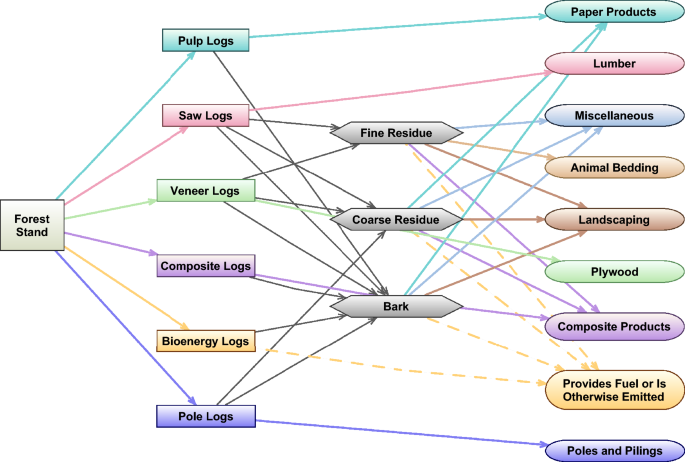2024-03-07 ノースカロライナ州立大学(NCState)
<関連情報>
- https://news.ncsu.edu/2024/03/improving-wood-products-could-be-a-key-to-reducing-greenhouse-gas-emissions/
- https://link.springer.com/article/10.1186/s13021-024-00254-4
米国南部のマツ植林地における木材製品の炭素フローをモデル化:炭素貯蔵への影響 Modeling wood product carbon flows in southern us pine plantations: implications for carbon storage
Sarah J. Puls,Rachel L. Cook,Justin S. Baker,James L. Rakestraw & Andrew Trlica
Carbon Balance and Management Published:21 February 2024
DOI:https://doi.org/10.1186/s13021-024-00254-4

Abstract
Background
Wood products continue to store carbon sequestered in forests after harvest and therefore play an important role in the total carbon storage associated with the forest sector. Trade-offs between carbon sequestration/storage in wood product pools and managed forest systems exist, and in order for forest sector carbon modeling to be meaningful, it must link wood product carbon with the specific forest system from which the products originate and have the ability to incorporate in situ and ex situ carbon synchronously over time.
Results
This study uses elements of a life cycle assessment approach, tracing carbon from US southern pine timber harvests to emission, to create a decision support tool that practitioners can use to inform policy design around land- and bioproduct-based mitigation strategies. We estimate that wood products from annual loblolly and shortleaf pine timber harvests across the southern US store 29.7 MtC in the year they enter the market, and 11.4 MtC remain stored after 120 years. We estimate fossil fuel emissions from the procurement, transportation, and manufacturing of these wood products to be 43.3 MtCO2e year−1. We found that composite logs, used to manufacture oriented strand board (OSB), were the most efficient log type for storing carbon, storing around 1.8 times as much carbon as saw logs per tonne of log over 120 years.
Conclusions
Results from our analysis suggest that adjusting rotation length based on individual site productivity, reducing methane emissions from landfills, and extending the storage of carbon in key products, such as corrugated boxes, through longer lifespans, higher recycling rates, and less landfill decomposition could result in significant carbon gains. Our results also highlight the benefits of high site productivity to store more carbon in both in situ and ex situ pools and suggest that shorter rotations could be used to optimize carbon storage on sites when productivity is high.



